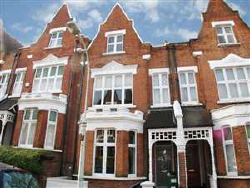Important update: The entire stamp duty system was overhauled in December 2014, so please read my explanation of the new stamp duty on UK property rules.
Chancellor Alistair Darling tweaked the stamp duty bands for UK houses in the 2010 budget to favour first-time buyers.
- No duty will be payable by first-time buyers who buy houses costing up to £250,000 (a special measure that expires in two years).
- However stamp duty is to be raised from 4% to 5% for houses costing more than £1 million, to pay for the measure for first-time buyers (a permanent change).
This means the bands are now as follows:
- 0% on houses between £0-£250,00 (for first-time buyers)
- 0% on houses costing up to £125,000 (non first-time buyers)
- 1% on houses costing £125,000 – £250,000
- 3% on houses costing £250,000 – £500,000
- 4% on houses costing £500,000 – £1 million
- 5% on houses costing £1 million or more
Note that unlike income tax the rate applies to the whole amount you’re paying for the house.
So you don’t pay £250,000 at 1%, and 3% on the next £250,000, and so on. You pay the full rate on whatever band you’re in.
What is stamp duty?
Stamp duty is a tax you pay to the UK Government when you buy a house.
In 2003 it was given the official name Stamp Duty Land Tax to distinguish it from the different tax you pay when you buy shares (which was renamed Stamp Duty Reserve Tax).
The different rates are payable depending on the purchase price of the property (as opposed to say the size of your mortgage you use to buy it with).
From time to time special rates are brought in to secure votes encourage redevelopment in disadvantaged areas or zero carbon home building. The current rates are available on HMRC’s website.
In my view stamp duty is a cash crop for the Government. It has increased the rates of stamp duty several times since coming to power in 1997.
It has also raised more revenue from the tax every year by not redrawing the bands to compensate for price inflation. (This is known as fiscal drag, jargon fans!) Far more people pay the tax now than a decade ago, as a result of rising house prices.
Note that the new £1 million-plus category, which covers quite a swathe of family homes in London, will be permanent, whereas the special tax-free rate for first -time buyers spending up to £250,000 expires in two years.
The tax also adds friction to the home buying process, by making moving house much more expensive, and it doesn’t do much to restrain prices. All it really does is distorts asking prices around the different band divisions.
For instance, it’s pretty much impossible to sell a house for £255,000, because buyers will not want to pay three times as much stamp duty by being pushed into the 3% bracket.
In practice, you’d have to reduce the house to £249,999, or else wait for prices to go up enough to enable your house to be sold for around £265,000.
Finally, some sophisticated buyers have employed various tricks such as paying separately for ‘fixtures and fittings‘ to stay below a band limit, or by using an Islamic mortgage to avoid paying the tax, but the Revenue may take a dim view of such methods.
Tread carefully and do your own research. Remember, tax avoidance is legal but tax evasion is not!








Comments on this entry are closed.